q8pmz.github.io
Solar System Proportions
Below is a collection of curious proportions in our solar system. Some pictures and ideas taken from https://joedubs.com.
Müller H. (2019), The Physics of Transcendental Numbers argues that proportions like these are, in fact, transcendental numbers that happen to be well approximated by rational fractions.
Earth and Moon
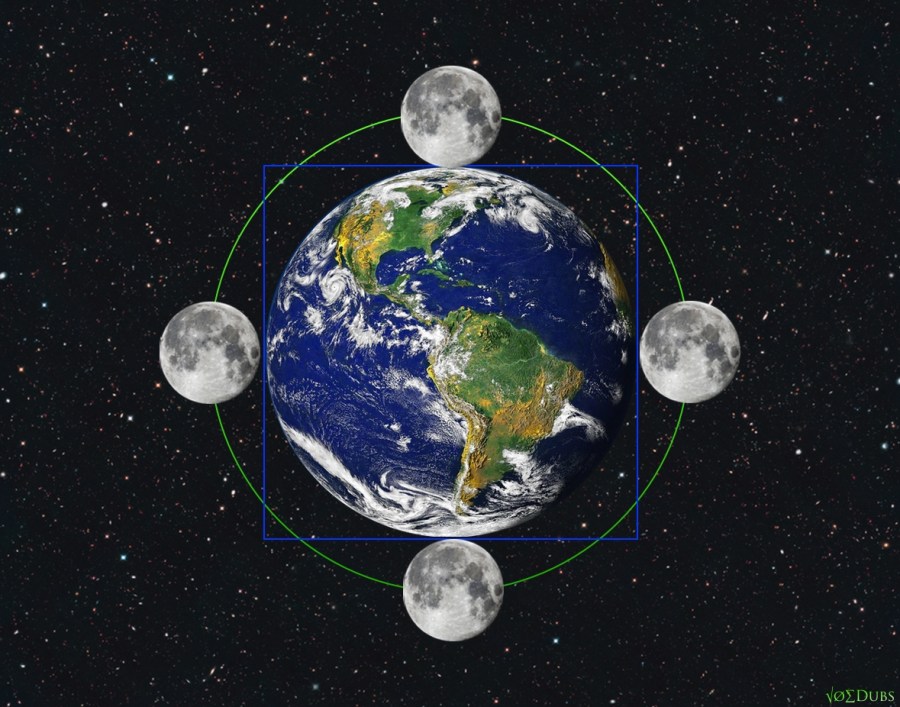
The green circle circumference is equal to the blue square perimeter:
- Earth diameter = 7920 miles.
- Moon diameter = 3/11 of Earth diameter = 2160 miles, with 99.98% accuracy.
- The perimeter = 4 D.
- The circumference = 14/11 π D = 4 D, with 3.5 sigma accuracy.
To be pedantic, 14/11 π = 3.99839…, but Earth and Moon average diameters are approximate numbers, so there is no point in using 8 decimal digits of 14/11 π in calculations.
Btw, it’s well known that one [mean tropical] year takes 365.242 days. It’s less known that the Earth circumference at the equator is 365.242 x 360,000 feet. That’s the reason I’m sticking to the imperial units (miles, feet, inches) here.
Mercury and Earth
The picture below is a bit too artistic to my taste, but it explains the proportions well.
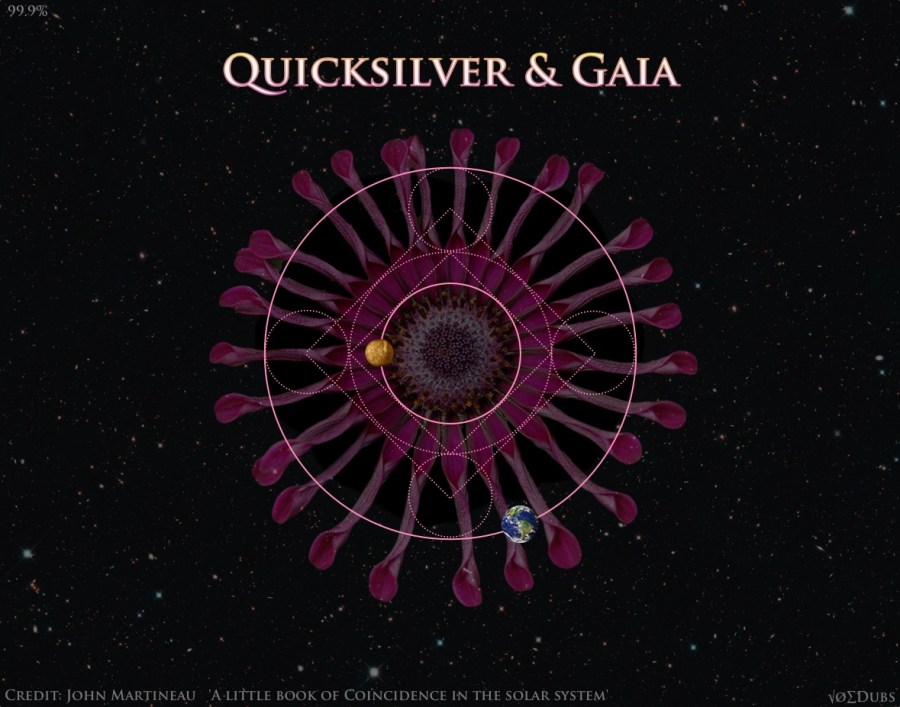
Start the Mercury’s orbit, put it into a square, and that square into another circle, and that circle in another square.
- Sun diameter = S = 0.864 million miles.
- Mean distance to Earth = E = 107.6 S.
- Mean distance to Mercury = M = 41.64 S = diameter of the inner circle.
- Diameter of the middle circle = C1 = 2 sqrt(2) M.
- Diagonal of the outer square = C2 = 4 M.
- Diameter of each of the 4 small circles = C3 = C2 - C1.
- Radius of the outer circle = R = C1 + 2 C3 = 2 C2 - C1 = (4 - sqrt(2)) M = 107.7 S.
So the outer circle indeed matches the Earth orbit with 3 sigma accuracy.
Another curious proportion:
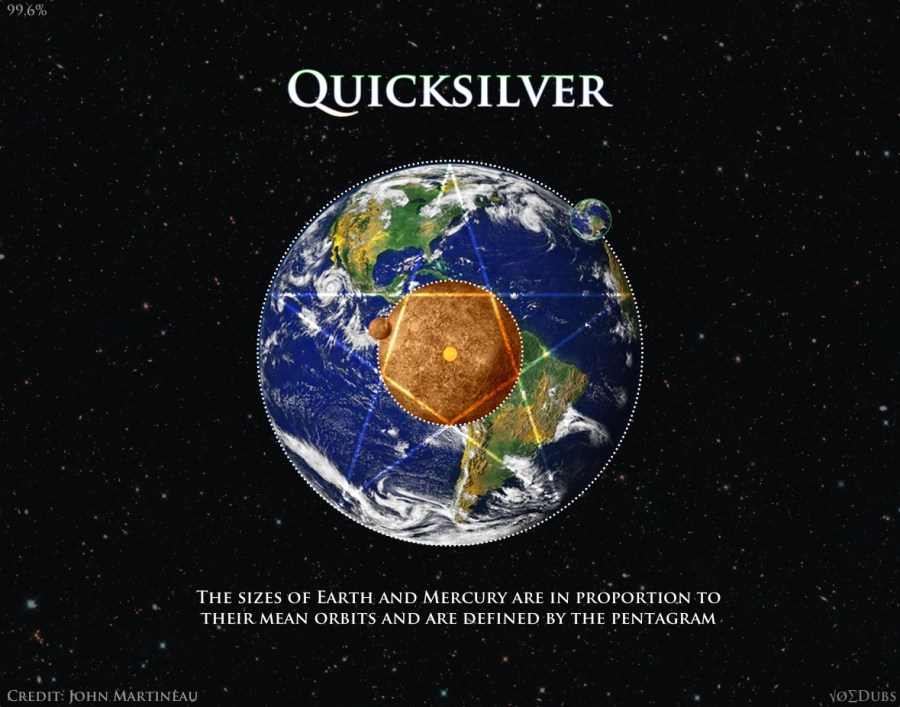
Relative proportions of the two planets are also interesting.
- Re = radius of Earth = 3960 miles.
- Rm = radius of Mercury = 1516 miles.
- P = the inner pentagon radius = 1/(Φ+1) of the outer pentagon radius.
Rm / Re = 0.382828 = P with 0.2% error margin.
Saturn and Neptune
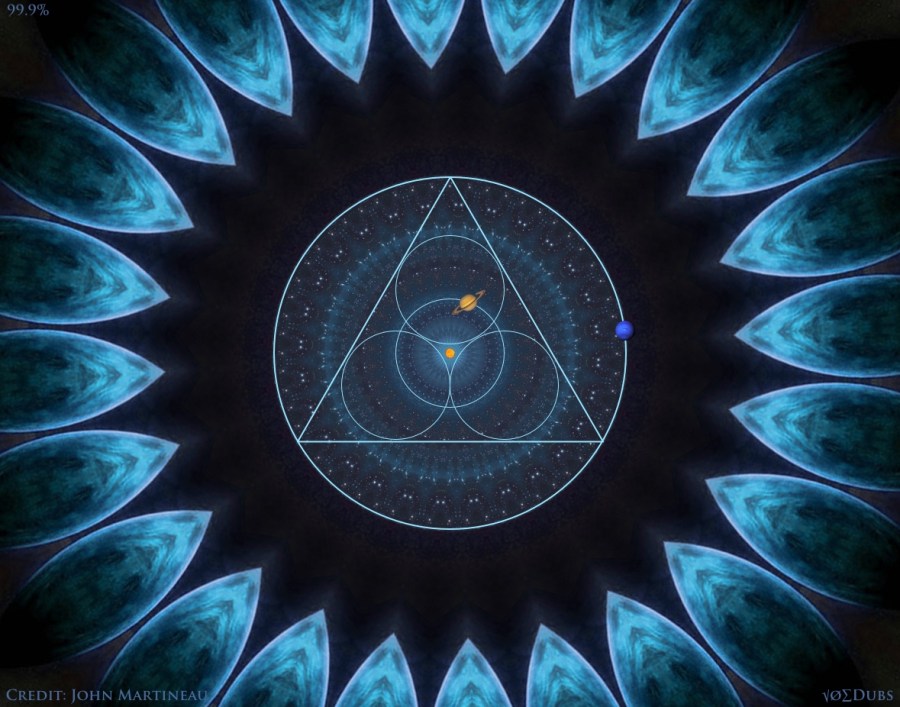
- Distance to Earth = 1 Au
- Mean distance to Saturn = Rs = 9.5303 Au (see NASA).
- Mean distance to Neptune = Rn = 30.12 Au = 3.1604 Rs.
- Radius of the outer circle = C = (2/sqrt(3) + 2) Rs = 3.1547 Rs.
So the outer circle indeed matches the Neptune orbit, but with error margin of 0.2% or 3 sigma.
Jupiter and Mars
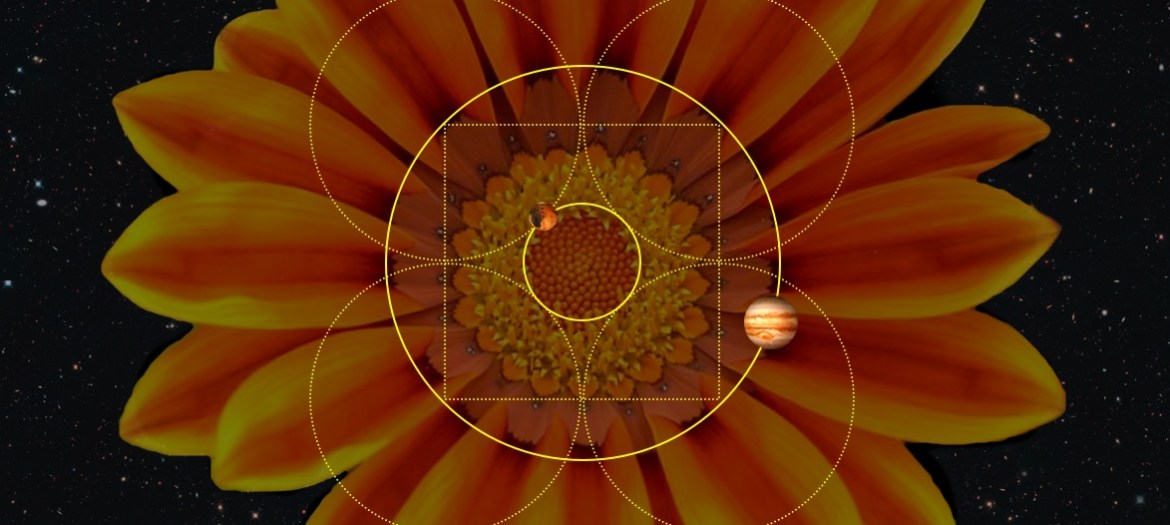
- J = distance to Jupiter = 484 million miles.
- M = distance to Mars = 142 million miles = 0.2934 J.
- R = radius of each of the 4 circles = 1/sqrt(2) J.
- C = radius of the inner circle = J - R = 0.2929 J.
Error margin: M/C - 1 = 0.2%.
Venus and Mercury
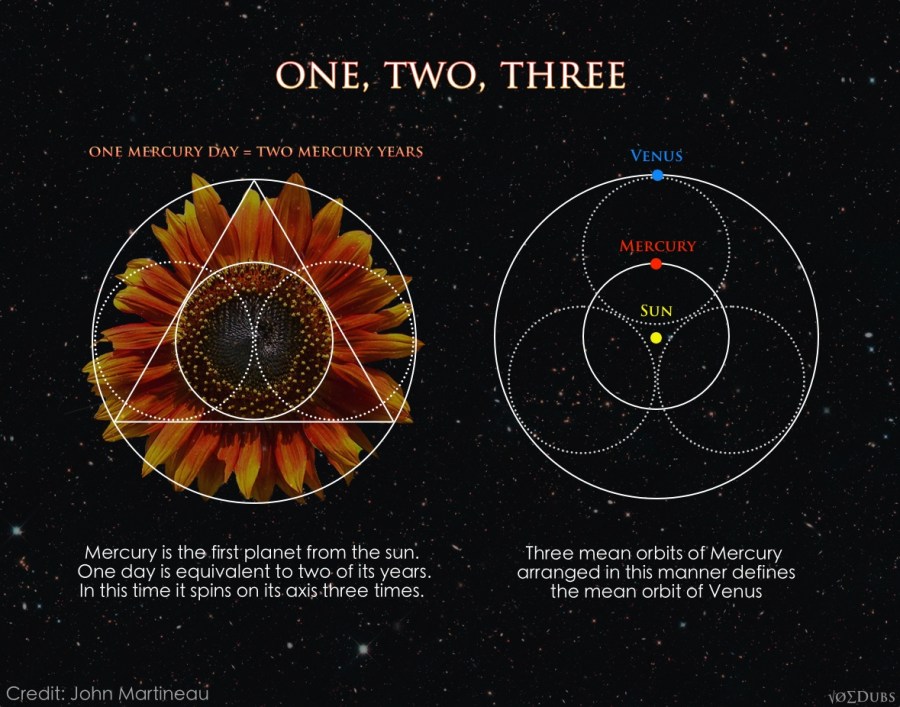
- V = distance to Venus = 67 million miles
- M = distance to Mercury = 36 million miles.
V = (1 + sqrt(3)/2) M with 0.3% accuracy.
Sun, Moon, Earth and Jupiter
It’s well known that Moon almost perfectly eclipses Sun, but there are a few more curious proportions involving Earth, Moon and Sun.
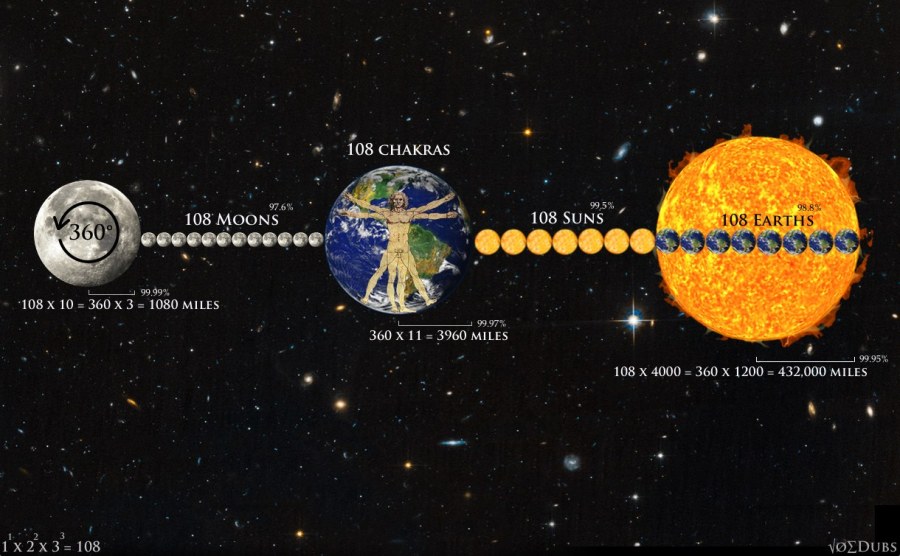
- E = Earth diameter = 7920 miles.
- M = Moon diameter = 3/11 E · 0.9998.
- S = Sun diameter = 864,000 miles = 400 M = 108 E · 1.01.
- Rm = mean distance to Moon = 237,674 miles = 30 E · 1.0003 = 108 M · 1.02.
- Re = mean distance to Earth = 92,955,807 miles = 108 S · 0.996 = 400 Rm · 0.98.
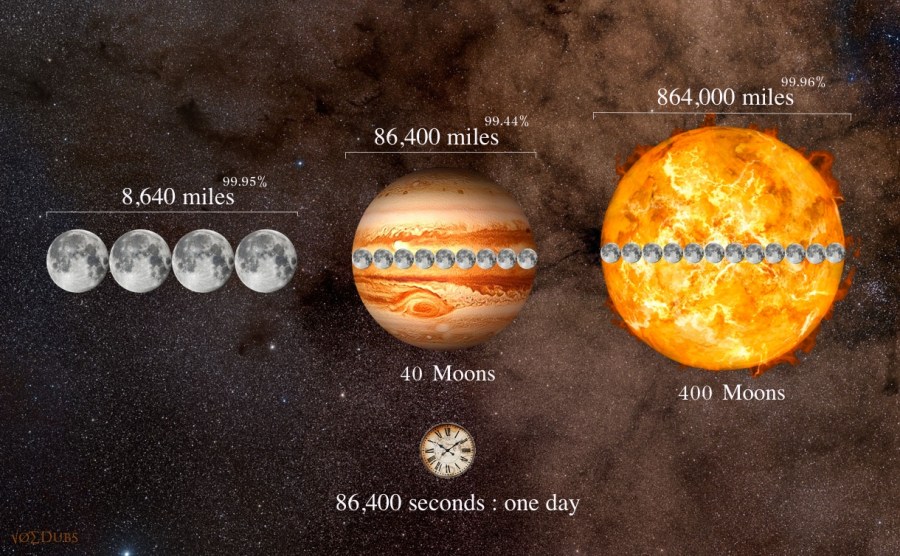
Uranus and Earth
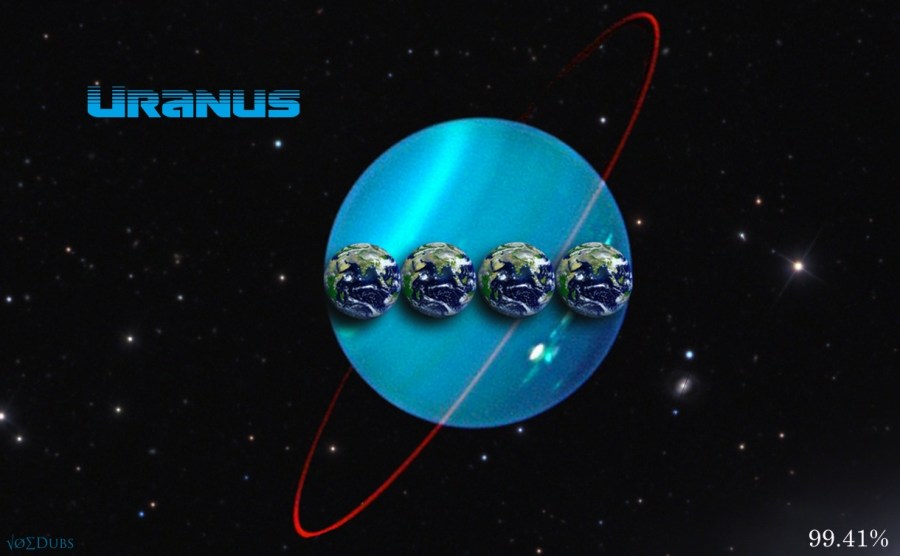
- U = Uranus diameter = 31,518 miles.
- E = Earth diameter = 7,920 miles
- U/E = 4 · 0.995.
Neptune and Venus
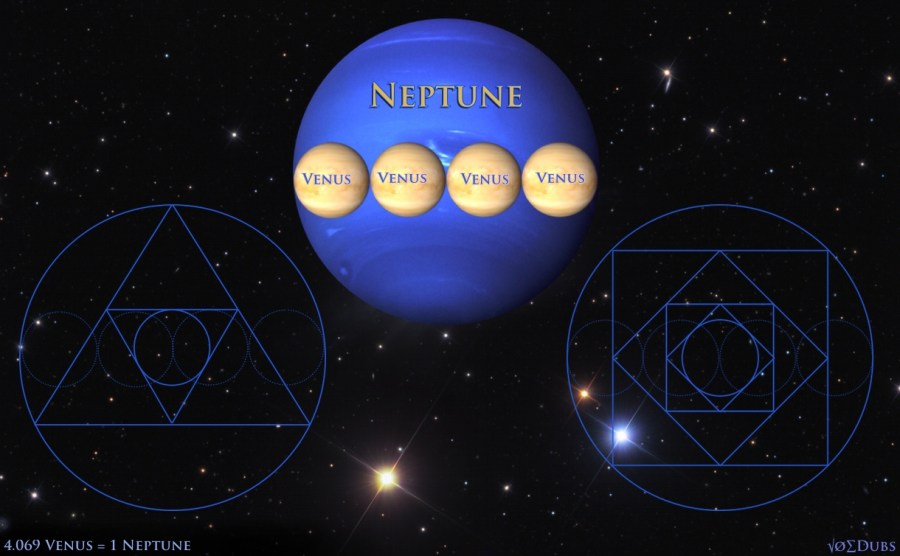
- N = Neptune diameter = 30,605 miles.
- E = Earth diameter = 7,920 miles.
- N/E = 4 · 0.97.
Saturn and Mars
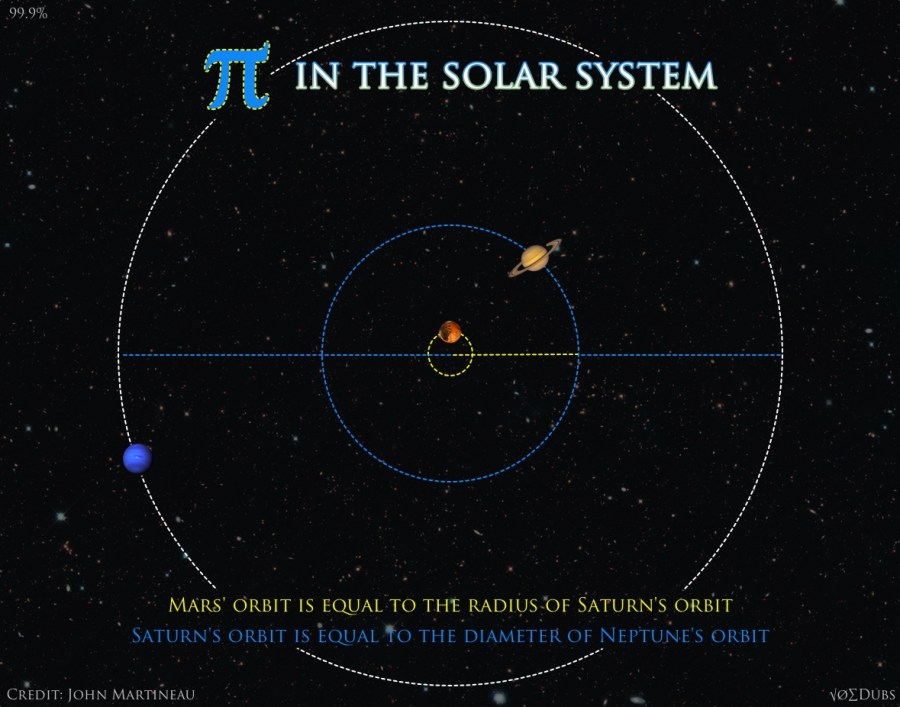
- S = mean distance from Sun to Saturn = 9.5826 Au.
- M = mean distance from Sun to Mars = 1.5237 Au.
- S / M = 2π · 1.0009.